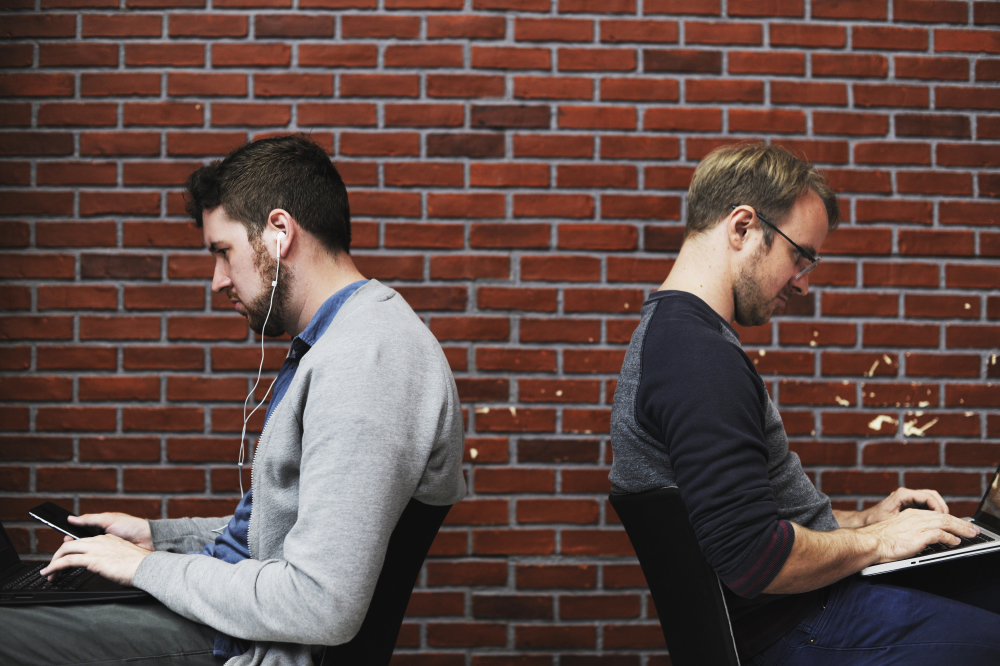By Oliver Eaton, ProHealth Clinic

Poor posture
Lower back pain is the most common symptom presented to GPs in the UK. According to recent figures from the Office for National Statistics almost 31 million days of work are lost every year due to back pain. Treating all types of back pain costs the NHS more than £1billion per year. The costs of care for low back pain alone, exceed £500 million a year. Lost production as a result of low back pain costs the UK economy £3.5billion a year.
According to NICE (National Institute for Health and Clinical Excellence) low back pain results in many problems, including impaired quality of life, mobility and daily function; long-term morbidity; a higher risk of social exclusion through inability to work; reduced income; reliance on sickness benefits; and social isolation through disability. Low back pain represents a considerable burden to individuals, families, society and the economy (for example, loss of working days, and early retirement).
To be able to prevent the occurrence of low back pain it is important to first understand what causes it:
Improper lifting techniques
One of the most common causes of acute low back pain is from lifting something without adopting a proper lifting technique. If you lift something without bending your knees, or twist whilst lifting, then it puts pressure on many of the structures in your lower back that can cause pain. A proper lifting technique ensures all the weight and pressure is distributed throughout your leg muscles.
Tight buttock and hamstring muscles
Even if you do use a proper lifting technique, your lower back can still be left vulnerable to injury if your buttock and hamstring muscles are too tight. These muscles attach into your lower back so play a big role in supporting your back when lifting something up from the floor. Also, these muscles are designed to absorb the force from each walking step we take. If the muscles are tight then that force transfers straight through into the lower back. The average person takes approximately 6000 to 10,000 steps a day, so you can imagine over time it can cause pain in the lower back.
Poor core strength
Your core muscles are responsible for holding your spine and pelvis upright in every movement that is made, preventing us from falling over like a rag doll. It also protects certain structures within the spine from injury. These structures include discs and ligaments. If your core muscles are weak then it can lead to too much force from a particular movement going through your lower back causing either a ligament sprain or slipped disc. Poor core strength can also lead to poor posture in routine activities such as sitting and standing.
Poor posture
Poor posture is one of the most common causes of chronic low back pain, and can be the reason why a low back injury fails to get better. In our busy day to day lives the postures we adopt are often subconscious and habitual. Poor posture whilst sitting can cause muscles and tendons to overstrain, leaving them vulnerable to going into spasm.
Inactivity
Inactivity causes many of our low back muscles to lose strength and forget how to coordinate. If our muscles lose the ability to coordinate then it can leave the low back vulnerable to injuring from simple routine movements such as getting in and out of a car. The age old saying applies with inactivity when people say if you don’t use it you lose it.
Weak mattress
We spend a third of our lives on a mattress sleeping so it’s not rocket science to understand that an old or weak mattress can cause low back pain. Depending on the sleeping position, a weak mattress can put your low back muscles under strain. You may feel as if the position you dose off to sleep in is comfortable but if you are in that position for up to 8 hours then it can leave muscles vulnerable to going into spasm.
Misalignments
Misalignments are the most under recognised cause of chronic low back pain. They can be caused by several things such as limping from a previous injury, soft mattresses, repetitive movements, pregnancy. Misalignments of the spinal joints puts pressure on the low back muscles during every movement you make. Misalignments of the pelvis can often cause a difference in leg lengths. This can cause your body weight to become unevenly distributed between both legs, causing pain on the side of the lower back that is bearing most of the weight.

ABOUT THE AUTHOR
Oliver Eaton is a qualified and registered osteopath, Medical Acupuncturist and Musculoskeletal Injection Therapist. He specialises in the treatment of sciatica, arthritis and headaches/migraines with patients travelling from across the UK and Europe for treatment. He is one of the leading practitioners in his field on Harley Street, having built his reputation on achieving results with patients who had previously had no success elsewhere.
Website: www.prohealthclinic.co.uk
Facebook: https://www.facebook.com/ihealthinjury/
Tagged in back pain

